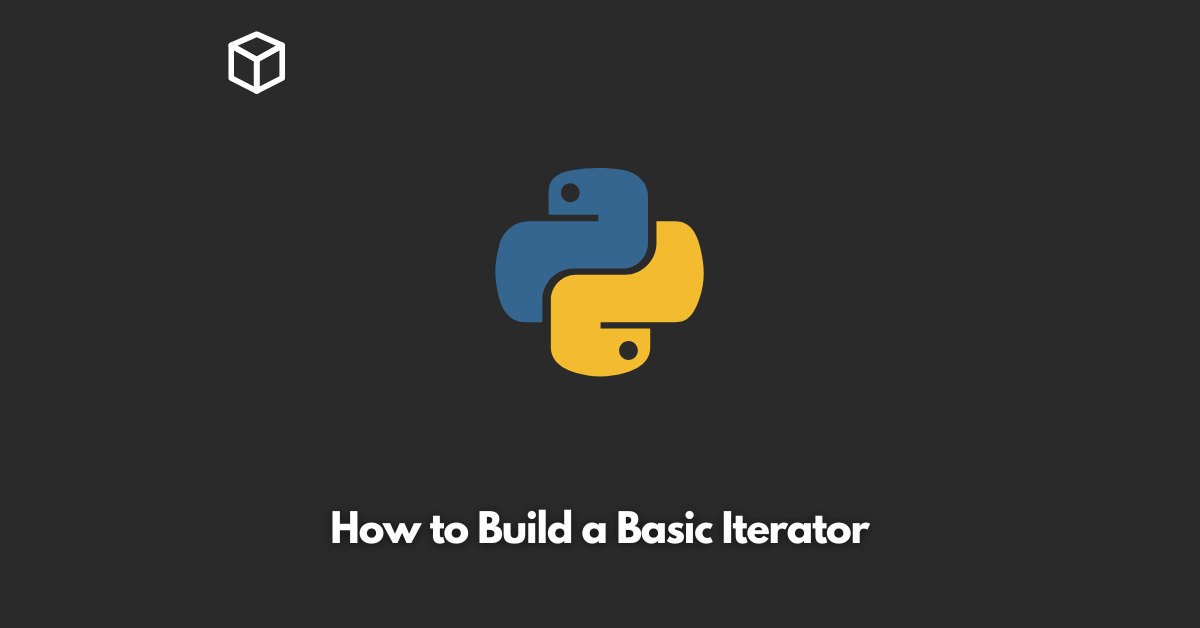Iterators are one of the fundamental concepts in computer programming and are widely used in almost all programming languages.
They are essential for working with collections of data and allow you to traverse a set of elements one by one.
In this tutorial, we will explore how to build a basic iterator in Python, a popular and easy-to-learn programming language.
What is an Iterator?
An iterator is an object that implements the iterator protocol, which consists of the methods iter() and next().
The iter() method returns the iterator object, while the next() method returns the next item in the sequence.
The sequence is terminated when the next() method raises a StopIteration exception.
Why do we need Iterators?
Iterators are used to traverse a collection of elements, such as lists, dictionaries, and sets.
They are also used to process large amounts of data, as they can be used to load data one item at a time, reducing memory consumption.
In addition, iterators can be used to implement custom data structures, such as linked lists, trees, and graphs.
How to build a Basic Iterator in Python?
Building an iterator in Python is relatively simple and can be done in two ways: by using the iter() and next() functions or by defining a custom class that implements the iterator protocol. In this section, we will explore both methods.
Using the iter() and next() functions
The iter() and next() functions can be used to build a simple iterator in Python.
The iter() function returns an iterator object, while the next() function returns the next item in the sequence.
Here is an example of how to use these functions to build a basic iterator:
# Create a list of numbers numbers = [1, 2, 3, 4, 5] # Get the iterator object it = iter(numbers) # Get the next item in the sequence print(next(it)) # Output: 1 print(next(it)) # Output: 2 print(next(it)) # Output: 3 print(next(it)) # Output: 4 print(next(it)) # Output: 5
Defining a custom class that implements the iterator protocol
In this method, we will define a custom class that implements the iterator protocol.
This method is useful when you need to create a custom data structure, such as a linked list, or when you want to implement a more complex iterator.
Here is an example of how to define a custom class that implements the iterator protocol:
class MyIterator:
def __init__(self, numbers):
self.numbers = numbers
self.index = 0
def __iter__(self):
return self
def __next__(self):
if self.index < len(self.numbers):
result = self.numbers[self.index]
self.index += 1
return result
else:
raise StopIteration
# Create an instance of the MyIterator class
it = MyIterator([1, 2, 3, 4, 5])
# Get the next item in the sequence
print(next(it)) # Output: 1
print(next(it)) # Output: 2
print(next(it)) # Output: 3
print(next(it)) # Output: 4
print(next(it)) # Output: 5
In this example, the MyIterator class implements the iterator protocol by defining the iter() and next() methods.
The init() method takes a list of numbers as an argument and initializes the numbers and index attributes. The index attribute is used to keep track of the current position in the sequence.
The iter() method returns the iterator object, which is the instance of the MyIterator class.
This allows the iterator to be used in a for loop or with the next() function.
The next() method returns the next item in the sequence.
If the index is less than the length of the numbers list, it returns the current item and increments the index.
If the index is equal to or greater than the length of the numbers list, it raises a StopIteration exception to indicate that the sequence has been exhausted.
Conclusion
In this blog post, we have explored how to build a basic iterator in Python.
We have seen that building an iterator in Python can be done by using the iter() and next() functions or by defining a custom class that implements the iterator protocol.
Both methods have their advantages and disadvantages, and the choice of method depends on the specific requirements of the task at hand.
Regardless of the method used, iterators are a powerful tool for working with collections of data and processing large amounts of data efficiently.




